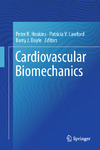| dc.description.abstract | This book is concerned with cardiovascular biomechanics; this is the study of the
function and the structure of the cardiovascular system using the methods of
mechanics. It has become clear that this area lies at the heart of all the major
cardiovascular diseases such as atherosclerosis and aneurysms; diseases which are
responsible for some one-third of world’s deaths. The underpinning principle which
will be referred to several times in this book is that the cardiovascular system adapts
in order to normalise its own mechanical environment. The cardiovascular system is
able to do this because mechanical forces are sensed by tissues, and deviations from
'normal' result in biological changes which affect structure. The study of cardiovascular
biomechanics therefore requires an interdisciplinary approach involving
biology, medicine, physics, engineering and mathematics. This book is an introductory
text suitable for students and practitioners in all these different fields. The
book is suitable as a textbook to accompany a final-year undergraduate or masters
(M.Sc.) course with roughly one or two lectures per chapter. It is also suitable as a
first text for researchers and practitioners in cardiovascular biomechanics. The book
is divided into four main sections; introductory Chaps. 1–2, Chaps. 3–8 on
biomechanics of different components of the cardiovascular system, Chaps. 9–13
on methods used to investigate cardiovascular biomechanics (in clinical practice
and research), and Chaps. 14–17 written from a perspective of diseases and
interventions. There are two appendixes; one with questions for each chapter
(multiple-choice questions, short-answer and long-answer questions), one with a
glossary of 900+ terms. In order that the book is accessible by a mixed audience the
text concentrates on explanations of physical principles without the use of complex
mathematics. A few simple equations are used and there are no derivations of
equations. The book is heavily illustrated with examples drawn from modern
investigative techniques including medical imaging and computational modelling. | en_US |

